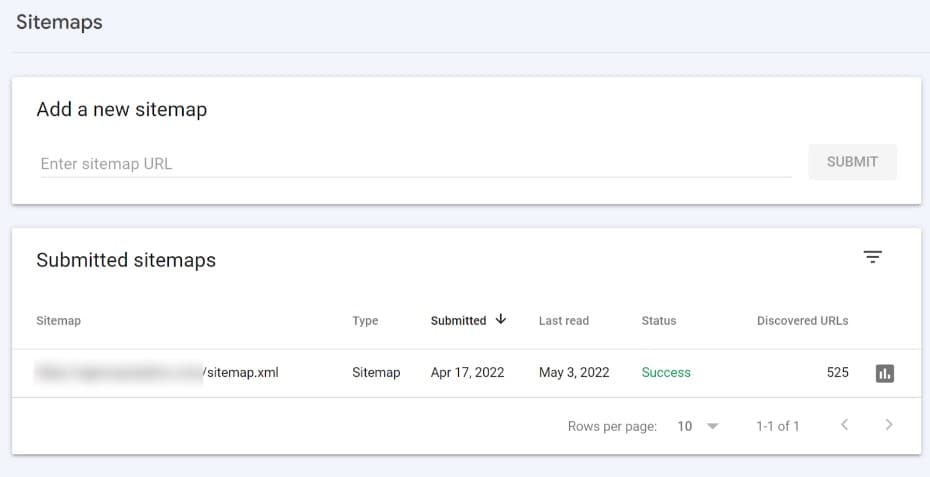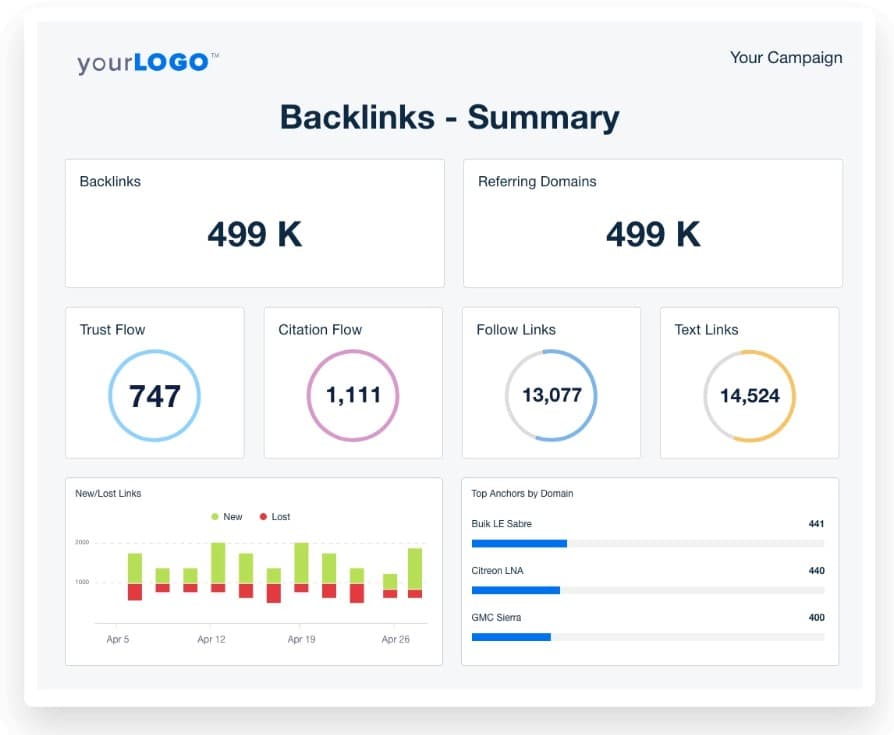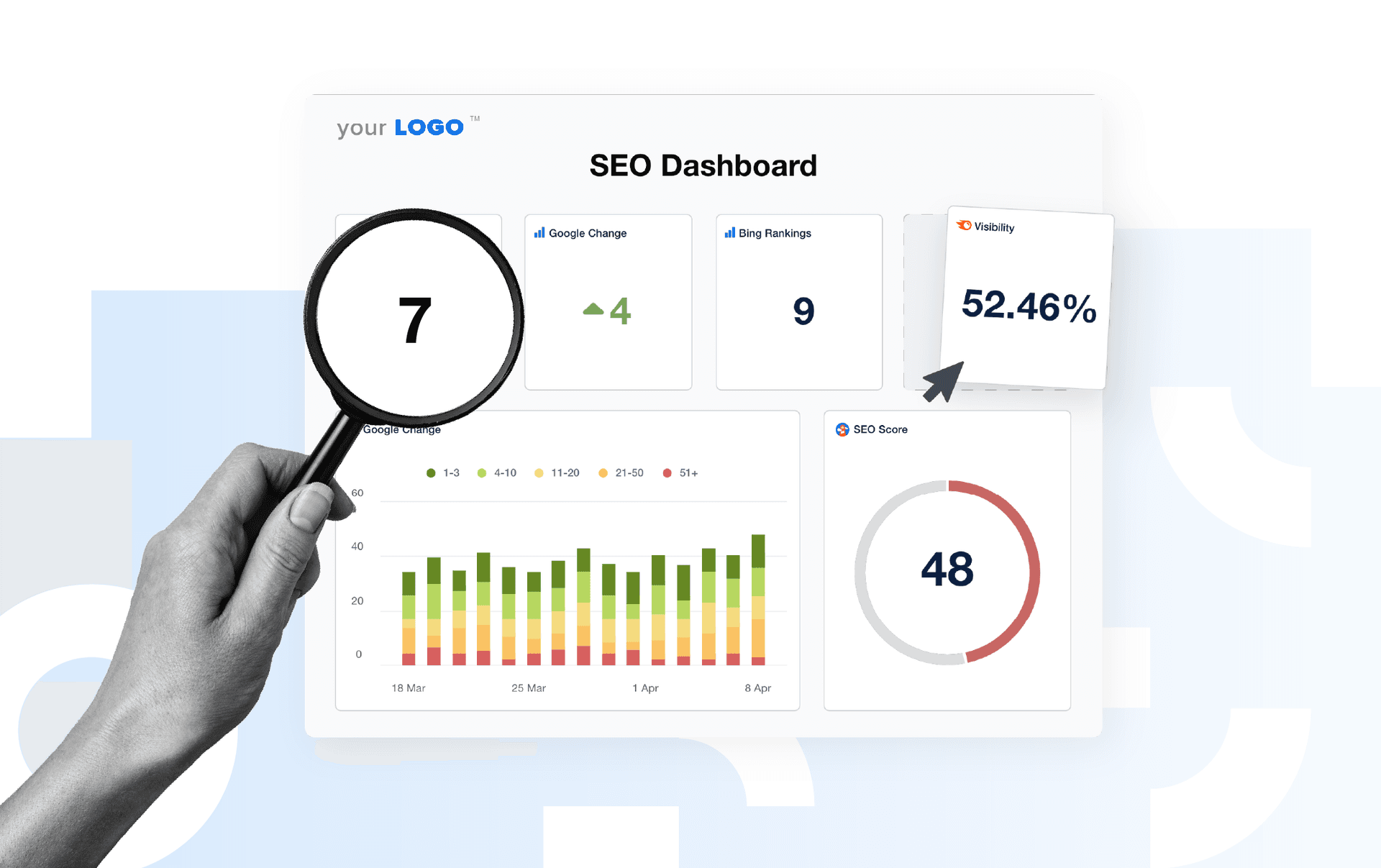Table of Contents
QUICK SUMMARY:
The sole purpose of Shopify SEO strategies is to gain online store visibility on search engines. It's necessary for attracting more visitors to a client's eCommerce site. However, to optimize a Shopify site, agencies need to refine website structure, improve page speed, and use effective keywords. This guide covers techniques to elevate clients' online presence, ensuring their products stand out in a competitive market while driving sales.
The right SEO strategy can turn your agency into a Shopify store’s most valuable salesperson. After all, having a fantastic lineup of products won’t help your clients if their potential customers can’t find them.
The Shopify platform offers your clients the ability to sell their goods and services without having to build a store from the ground up. And that functionality brings several quirks that impact how your SEO strategy unfolds.
There is no excuse for bad Shopify SEO practices. Not anymore. Maybe in the early days of web development, when people didn’t know better. But today, there are enough tools and qualified professionals available for anyone to have an SEO optimized Shopify website.
— Lukas Henderson, Shopify Expert at Marketplace Solutions
According to eMarketer, Shopify has recently emerged as a leading eCommerce platform for merchants large and small.
During the Pandemic, Shopify nearly tripled its revenues, more than doubled its gross merchandise value (GMV), and nearly doubled its merchant count since 2019. It quickly became one of the go-to eCommerce platforms as traditional retailers and manufacturers rushed to get online to offset the sudden halt of in-person shopping.
However, haste often leads to waste, and many companies found themselves with a Shopify website that had not been properly optimized for organic search.
Years later, and many current and potential clients run quickly-assembled Shopify stores that lack some of the Shopify SEO best practices required to help them succeed online.
We’ve put together this Shopify SEO guide to help you move your client’s Shopify store's pages up the search engine rankings and get them in front of the right eyes.
If your agency is in the process of building a brand new Shopify storefront, then you are starting with an SEO blank slate and can do it right the first time. For your clients with a Shopify storefront built by someone else, the first step is to get a sense of their store’s overall search engine optimization health.
A technical SEO audit provides at any SEO issues impacting a site. Though once you’ve done that, there are some specific tips unique to Shopify stores that you should try out.
11 Tips to Optimize a Shopify Store With an Effective SEO Strategy
A Shopify site’s success is going to depend on several eCommerce metrics and SEO KPIs. To give those numbers a boost that you can show off in your agency's white label Shopify performance dashboard, we’ve outlined a few tips below:
While many of these strategies should be familiar to you, let’s take a look at the ways they are uniquely applied to the Shopify platform.
1. Dig Into Each Page’s Code
One of the toughest parts of maximizing a Shopify website’s SEO is digging into its source code to add important commands and clean up some typical Shopify code bloat which can make the site more visible to search engines.
This is an opportunity for your agency to really shine because it’s likely one of the skills your client is missing and a service your agency is uniquely positioned to offer. A client with an existing Shopify website likely hasn’t done much to change it after hiring a developer to build it for them.
Shopify developers are notorious for adding themes and plugins that make the site look good–but create significant code issues that can negatively impact search engine optimization (SEO). A few small tweaks can make all the difference in making sure the right pages stand out to search engines.
2. Update the Robots.txt File
Another small tweak your client likely hasn’t thought about is customizing the robots.txt file to let search engines know which low-value pages should be ignored. This would include checkout and shopping cart pages, or any admin pages that shouldn’t be public-facing.
You’d be amazed how often Shopify developers forget this simple step and leave content that should be hidden open for crawlers to find.
Another option to help keep these pages hidden is to go into each specific page’s code and add the “noindex” tag. This might be more time-consuming for larger stores with a lot of pages though.
3. Submit a Sitemap & New Pages
While your Shopify store may be perfectly designed to appeal to your customers, if they can’t find your site because you aren’t ranking highly on Google, you will have trouble succeeding. With most people now turning to Google to search for products, it is a highly competitive space and you need a carefully planned and tailored SEO strategy to bring targeted and consistent traffic to your Shopify store.
— Pinku Ranpura, CTO at Zib Digital
A sitemap.xml file similarly helps search engines figure out which pages should be tracked. Although building one might seem like a tough task, Shopify generates them automatically for you, saving some time.
Initially, you want to submit your client's sitemap on Google Search Console and other search engines:

For a full tutorial on how to submit your client’s sitemap, you can check out Shopify’s guide.
If you have a priority product or content launch, you should also submit the URL for each newly published product or post to Search Console via URL Inspection and other search engines, which may get it crawled faster. While search engines will eventually find new pages as they are added to the XML sitemap automatically, submitting URLs can sometimes speed up that process.
4. Hunt Down Duplicate Content
A Shopify store can have a large number of products and supporting pages, and when so many pages are being created, it’s very easy–and all too common–for whoever is setting up the page to take shortcuts, such as reusing blocks of text, repeating images, or duplicating an entire page and then making very minor tweaks. This can create confusion for a search engine, but that can be minimized by rewriting descriptions, changing images, or getting rid of redundant pages entirely.
Once you've removed all duplicate pages, start diving deeper into product pages by sussing out duplicate title tags and meta descriptions. Although meta tags and descriptions don’t directly impact where your client shows up on search engine results pages, it may impact whether a potential customer clicks through when they’re reading those descriptions on Google.
Agency Tip: You’ll know that your client did not hire an agency with Shopify SEO knowledge to build their original site if you see simple yet common SEO mistakes such as having “Home” as the meta title on the homepage or every single page has generic branding copy as the meta description. If you do find this, celebrate the fact that your agency will get some quick and easy wins.
5. Add Some Structure To Your Client’s Site
Always prioritize quality over quantity. A large, bloated Shopify site with a lot of redundant pages is not usually appreciated by users nor search engines. And it’s important to make sure that your client’s customers can find what they’re looking for. Once you’ve reduced the number of pages on the site, the next step is to organize them into category pages.
This on-page SEO tactic will make the site more easily understandable to search engines, ideally with as few levels as possible. The example below is how your client’s site should be structured, with products directly accessible from the home page and a focus on minimizing click depth.
SEO Click Depth refers to how many clicks it takes to get from your client’s homepage to the content in question.
When counting click depth, the homepage is considered to be Click 0. Any pages linked on the homepage have a Click Depth of 1. Any internal links from that page will have a value of 2. Links on a 2 page will have a Click Depth of 3, etc. Also, remember to check for broken links or web pages that could affect user navigation.
SEMrush calls out any pages that have a click depth of 4 or more as being an SEO issue that should be addressed whenever possible.

6. Add 301 Redirects
A 301 redirect quickly moves site visitors and search engines towards a new page when an old URL is no longer being used. Whether these pages are gone because of site maintenance detailed above, or the simple churn of products no longer being offered, you never want someone to end up with a “404 page not found” message.
To fix broken links, look for the option in a store’s setting under “Navigation” and then “URL Redirects.”
But be careful not to fall into the trap that many marketers and agencies get caught in, which is relying too heavily on 301 redirects. These are great as a fall-back to point users to the correct page so they don’t hit that dreaded 404. But these redirects should not replace the process of updating links on your client’s site, as well as external links, to point to the new URL.
Whenever possible, links should be updated if the content has been moved and 301 redirects should only be used for links that can not easily be updated.
7. Get Sharper Images
A performance issue for Shopify stores, particularly on mobile, are the long image loading times. Using the Shopify app Crush.pics will reduce the size of images, making your client’s site more responsive, encouraging more browsing, and leading to stronger SEO performance.
Remember to include alt text to images as well. They provide a simple way to help them appear in Google image searches and offer a greater degree of SEO accessibility, both of which are important in improving a page’s overall rank.
8. Simplify URLs
A page created on the Shopify platform conveniently allows it to be found via multiple URLs. So a potential customer will be directed to your client’s website when they type in “www.awesomekicks.com” or “awesomekicks.com”, or if they’re stuck in 1995 they might type “http://www.awesomekicks.com”.
While all these URLs lead to the same place, to a search engine, these would read as different websites, and it would then use its own formulation to determine which URL is the canonical one. Google has a helpful tool letting you know which domain of a given website is the canonical one.
Shopify gives you control of this domain under a Shopify store’s “Online Store” section and under the Domains heading, choosing to redirect all traffic to the domain you want tracked on search engines. And make sure to implement canonical tags across the site to avoid accidental duplicate pages.
While we’re talking about URLs, when Shopify generates a new page on a product or post, take a moment to shorten the default URL that it’ll generate. Even if the product team went keyword-happy in the product name, "mens-cool-blue-cotton-shirt" is better than "mens-cool-blue-cotton-shirt-perfect-for-summer-evenings-and-makes-a-great-gift-for-dad".
Be aware that there are some folders that are part of a Shopify’s store structure that can’t be changed without a bit of maneuvering, such as the parts of the URLs that read “/blogs/” and “/collections/”. When creating items to go into these folders, be aware they’re there and don’t create redundant folders leading to a URL like “yourstore.com/blogs/blog/Septblogs/”.
Jesse Ringer, founder of Method and Metric SEO Agency suggests "In order to maximize Google’s crawl budget on your site, it’s smart to remove the collection slug from these product links."
As part of an agency that specializes in SEO for Shopify, he recommends this approach because it streamlines the SEO permalink structure. Not sure how to do this? Jesse provided a quick how-to guide:
"Start in your Shopify dashboard by going to Online Store > Themes > Customize > Theme Actions > Edit Code > Snippets > product-grid-item.liquid.

9. Build Up Backlinks
Getting high-quality backlinks requires the time and patience your client might not have. Start with high-quality, shareable content for your client’s site. Whether that’s a social media post demonstrating how great a new miracle potato peeler is, or a product page that uses cute photos to highlight a stylish hat for cats, this off-page SEO tactic is a great way to increase organic traffic.
Not all links are equal, and reaching out to the press or influencers on popular sites can produce write-ups for a shop’s product, creating a high-quality backlink. And once you’ve gotten your first review from a blogger, that can be used to help convince other bloggers to do the same.
Even if SEO backlink outreach isn’t your agency’s specialty, there are some broader tips for link building campaigns that always apply. But remember that when promoting a Shopify store, the goal is to turn that attention into customers. Always keep in mind: knowing that a charming sweater exists is not as helpful as knowing where to buy it.

Use our Backlink Monitor tool to track your link-building campaigns all in one place. Try it free for 14 days!
10. Don’t Forget Traditional Content Marketing
A blog may not be the obvious choice for a Shopify store, but it is included on the platform for a reason. A blog post typically fares better in search engines than a product page, especially when it comes to informational-intent keywords. From being more likely to be updated to retaining visits for longer periods of time, there are several ways to refresh your client’s website content to keep its ranking up. It’s also an SEO strategy that an agency can offer more easily than someone who may otherwise be preoccupied with running their online business.
For topics, consider the target keywords your SEO strategy is targeting, particularly the results from your keyword research that will generate revenue. For the blog entries, think deeper than highlighting a product. Instead of talking about the best flower pots in the world, consider an article about using flower pots in creative ways for the holidays. But not every article idea has to rhyme!
Consider executing a multi-pronged content approach that covers different topics related to your client’s target audience, such as:
Prong A - Content related to your client’s product. This can include buying guides, tips, comparisons, etc. For example, an agency with a mattress company for a client could create an article about how to select the right bed size based on sleep habits, family size, bedroom size, etc.
Prong B - Content that is relevant to your target audience’s interests. This can include best practices, how-to guides, or fun articles that allow your client to engage with the people who are likely to buy. For example, an eco-focused product retailer could benefit from some blog content on sustainable gardening and a target keyword like "eco-living tips". To monitor results (like organic traffic and engagement), use a platform like Google Analytics 4.
Prong C - Content that is relevant to your client’s location. Whether they are hyper-local or focus on a particular country, consider adding some content that celebrates their geographic roots and helps them connect with their audience. For example, a content idea for a Tampa-based beauty retailer could be an article about local nightlife. As always, remember to use a keyword research tool, look into the search volume, and choose relevant terms.
11. Getting Your Products Reviewed
A bright five stars attached to a product not only increases the chance of a sale, but the presence of a review gets it a higher spot in search results too.

User-generated content is deemed more “authentic” by Google, and having it on your client’s Shopify store, particularly if it’s matching relevant keywords, helps it out in the algorithm. Potential customers are more likely to spend time on a page if they can learn about a product from others who have hands-on experience with it.
Even a few bad reviews offer the chance to demonstrate a store’s ability to respond by replying with comments that might provide more context to the situation.
Shopify has several apps that can help you integrate reviews, such as Stamped, Judge.me., Yotpo, and Shopify’s own product review tool.
One word of caution though: focus exclusively on reviews for products, and not groups of items you would see in Shopify collections. Google is very explicit about this, and putting up reviews for collections is a violation of their rules, and could have negative consequences for a Shopify store.
12. Utilize Schema Markup
Implementing schema markup can give your client’s Shopify store an edge in search engine results. Schema markup is a form of microdata that helps search engines understand the content of a webpage more clearly. By adding schema to product pages, blogs, and other pages, you improve the chances of your client's site appearing in rich snippets, which can lead to more traffic.
For instance, adding schema markup to product pages can display additional information like prices, reviews, and availability directly in search results. This enhances visibility and click-through rates. Shopify apps like "JSON-LD for SEO" can simplify the process of adding schema markup to your client’s site. And don't forget about local business schema markup for online stores that also have a physical presence!
13. Optimize Page Titles and Meta Descriptions
Page titles and meta descriptions are fundamental elements of Shopify SEO basics. They help search engines understand the content of a page and influence search rankings. Ensure that each page title is unique, descriptive, and includes relevant search terms. Similarly, craft compelling meta descriptions that incorporate the right keywords and encourage users to click through.
Using Shopify’s built-in SEO features, like the search engine listing preview, can help you visualize how these elements will appear in search results, allowing you to make necessary adjustments for maximum impact.
14. Leverage Category Pages
Properly structured category pages improve both user experience and SEO performance. These pages should be optimized to highlight key products and include relevant keywords. Ensure category pages have clear, concise titles and descriptions, and incorporate internal links to related products and other pages.
15. Optimize Images for Faster Load Times
Large, unoptimized images can significantly slow down your client’s Shopify store, affecting both user experience and search rankings. Compress images using tools like TinyPNG or Shopify apps designed to optimize images without sacrificing quality. Additionally, always include descriptive alt text to help search engines understand the image content and improve the page’s accessibility.
16. Improve Site Speed
Site speed is a critical factor for both SEO and user experience. A slow-loading site can lead to higher bounce rates and lower search engine rankings. Utilize tools like Google PageSpeed Insights to identify areas for improvement. Optimize images, leverage browser caching, and minimize HTTP requests to boost site speed. Shopify's built-in tools and apps can also assist in enhancing performance.
17. Conduct Keyword Research to Match Search Intent
Understanding search intent is vital for effective SEO. Conduct thorough keyword research to identify the terms potential customers are using and ensure that your content matches their search intent. Tools like Ahrefs, SEMrush, and Google's Keyword Planner can help identify high-traffic search terms relevant to your client’s products.
18. Secure a Custom Domain
A custom domain enhances brand credibility and can improve SEO. Ensure your client’s Shopify store uses a custom domain rather than the default Shopify URL. This small change can make the store appear more professional and trustworthy, which can positively impact click-through rates from search results.
19. Utilize Shopify Apps for SEO
Shopify offers a range of apps designed to enhance SEO efforts. Apps like Plug in SEO, SEO Manager, and Smart SEO provide tools for optimizing various aspects of a Shopify store, from meta tags to image alt text. These apps can automate some of the more tedious SEO tasks, allowing you to focus on strategy and content creation.
20. Monitor Performance with Bing Webmaster Tools
While Google often takes the spotlight in SEO discussions, don’t overlook Bing. Using Bing Webmaster Tools, you can gain valuable insights into how your client’s Shopify store performs on Bing. This platform offers tools for keyword research, site diagnostics, and performance tracking, helping you capture a broader audience.
21. Focus on Local SEO
If your client’s also operate a physical location, local SEO is essential. Ensure that the store’s name, address, and phone number (NAP) are consistent across all online listings. Encourage satisfied customers to leave reviews on Google My Business and other local directories. Implement local schema markup to help search engines understand the store’s location and improve local search rankings.

Quickly create a local SEO report template to showcase the performance of clients' online stores alongside the growth in local awareness. Try AgencyAnalytics free for 14 days!
By incorporating these additional strategies, you enhance the effectiveness of your agency's Shopify SEO efforts, driving more traffic and improving the overall performance of your client's online store.
Keeping Up With SEO: Choose the Right SEO Tools
Taking all those steps outlined above won’t matter much if you don’t keep track of your campaign’s performance. That starts with a Shopify reporting tool that gives you a quick glance at a store’s KPIs and other important Shopify analytics, and keeps a constant pulse on your clients’ key metrics to suss out any specific issues. SEO reporting software in particular will track the success of your SEO strategy.
Standard SEO practices are the bare minimum when maintaining a Shopify store. And the strength an agency brings to improving its SEO lies in leveraging its expertise and time to benefit its clients, specifically regarding how search engines index a client's Shopify store.
That could include knowing how to write lines of code to fix common SEO audit errors, running a technical SEO audit, adding internal linking, going through an SEO checklist, or writing a well-targeted blog post. Leveraging those strengths for your client’s Shopify site is an opportunity to make it truly shine.

Use our Ecommerce Dashboard to look at all of your client’s Shopify metrics in one place. Try it free for 14 days!
Summary and Key Takeaways
Optimizing a Shopify store for improved search engine ranking involves several targeted strategies to enhance visibility and attract more traffic. Key steps include refining website structure, improving page speed, and utilizing effective keywords. Detailed coding adjustments, updating the robots.txt file, and submitting a sitemap can significantly impact search engine rankings.
Other important practices include eliminating duplicate content, optimizing images, simplifying URLs, and building quality backlinks. Leveraging structured data and creating blog posts further boosts SEO performance.
Tools like Google Search Console, Google Analytics, Bing Webmaster Tools, and Shopify apps support ongoing optimization efforts, ensuring your client's store remains competitive.
Key Takeaways:
Refine Website Structure: Organize your client's site into clear category pages to improve user experience and search engine understanding.
Optimize Page Titles and Meta Descriptions: Ensure unique, descriptive titles and meta descriptions for each page URL.
Leverage Schema Markup: Implement structured data to enhance search visibility and rich snippet appearance.
Regularly Create Blog Posts: Use targeted keywords to produce content that attracts and retains traffic.
Build Quality Backlinks: Reach out to relevant websites for high-quality backlinks that drive organic traffic.
Use Time-Saving Shopify Apps: Employ SEO tools and apps to automate and streamline optimization tasks.
Monitor Performance with Google Search Console and Bing Webmaster Tools: Gain insights into site performance and capture a broader audience beyond Google.
Following these Shopify SEO best practices can help an SEO professional improve their client’s search engine rankings, drive more traffic, and increase sales.

Written by
José Gonzalez is a writer and editor who specializes in bringing to life the stories of people and businesses.
See how 7,000+ marketing agencies help clients win
Free 14-day trial. No credit card required.





